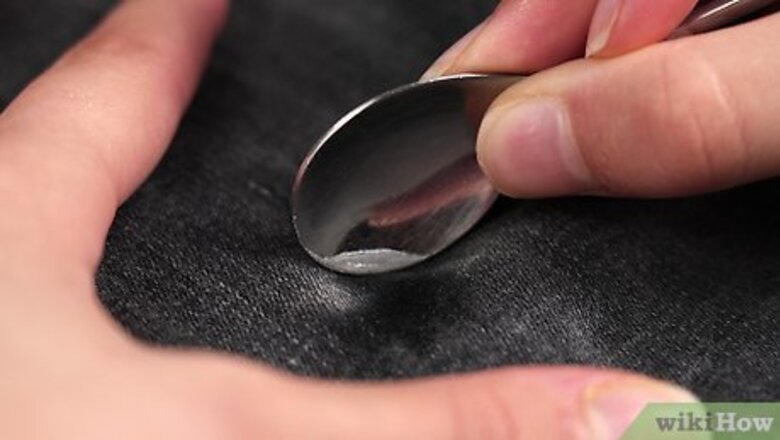
views
- Use a spoon, dull knife, or credit card to remove globs of Aquaphor on your clothes.
- Rub dish soap into fresh or dried stains and let it sit for 15 minutes. Or, apply equal parts baking soda and water onto the stain and leave it for 30 minutes.
- Wash your garment in the coolest water according to its care instructions. Then, leave it to air dry.
Scrape off excess Aquaphor with a spoon.
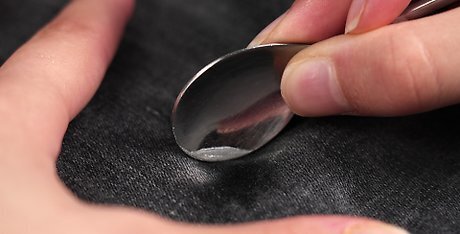
Avoid spreading the stain by removing any globs of Aquaphor. Use a dull butter knife, spoon, credit card, or toothpick to gently scrape off thick clumps of Aquaphor on your garment. This prevents the stain from getting deeper into your garment as you clean it.
Massage dish soap into the Aquaphor stain.
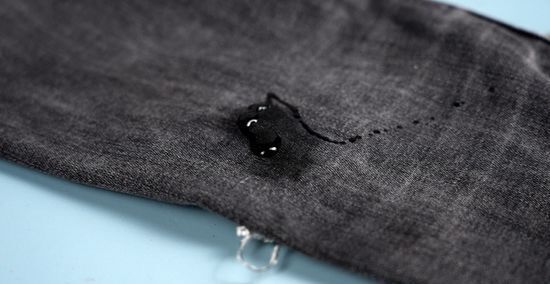
Pour dish soap on the stains and let it sit for 15 minutes. Dish soap is a great degreaser that lifts off waxy Aquaphor stains on your clothes. Just apply a drop of dish soap onto each stain and massage it into your clothes with your fingers. Then, let the dish soap sit and work its way through the stain for 15 minutes. Dish soap also lifts off Aquaphor stains on sheets, pillowcases, and other fabrics.
Cover the stain with baking soda paste.
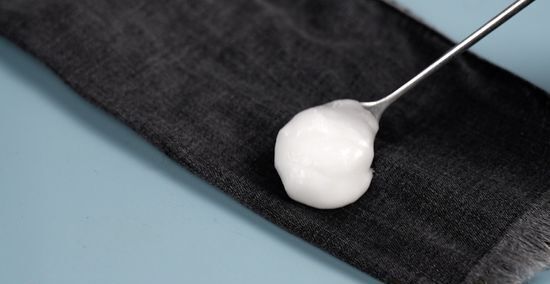
Rub baking soda and water into the stain and let it sit for 30 min. Baking soda has oil-absorbing properties that make it a great, natural cleaner to remove fresh and dried Aquaphor stains. Just mix 1 tbsp (17 g) of baking soda with 1 tbsp (15 mL) of water to create a thick paste. Then, massage the paste into the stain with your fingers, leaving it to soak in for 30 minutes. Rinse out the paste with cool water after 30 minutes. If your sheets or other linens are covered in Aquaphor stains, baking soda is safe to use on them, too. For a stronger oil-fighting mixture, combine hydrogen peroxide and baking soda into a paste. Hydrogen peroxide eats away at oil and grease, making it a great option for large, stubborn Aquaphor stains. Dab a small drop of hydrogen peroxide onto an inconspicuous part of your clothes to make sure it doesn’t stain them before using it.
Dab rubbing alcohol into the Aquaphor stain.

Use a cotton swab to blot fresh or dried stains with rubbing alcohol. Rubbing alcohol is an excellent stain remover that dissolves oily, waxy substances like Aquaphor. Simply wet a cotton swab or clean cloth with rubbing alcohol and dab it into your stain. Just keep blotting at the stain until it is gone from your clothes. Patch test the rubbing alcohol on a hidden part of your clothes before treating the stain. This ensures that the rubbing alcohol doesn’t remove the dye from your clothes. Do not use rubbing alcohol on delicate fabrics like silk, rayon, and wool. Rubbing alcohol can damage these fabrics’ fibers. Rubbing alcohol also removes ointment on sheets, towels, and other linens. For extra degreasing power, mix a bit of baking soda with the rubbing alcohol to create a paste. Then, pat the paste into the stain and leave it for several minutes.
Blot the stain with vinegar.
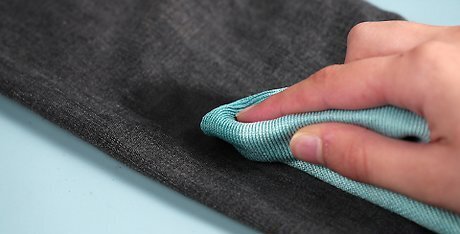
Soak and dab the stain with a 1:1 mix of white vinegar and water. The acetic acid in white vinegar eats away at waxy substances like Aquaphor to leave your clothes stain-free. Just mix together equal parts white vinegar and water into a bowl. Then, dip in a clean cloth and apply it onto the stain to soak it with vinegar. Let it sit for 10 minutes, then dab at the stain with the cloth until it’s gone. Apply a small amount of the vinegar mixture onto a hidden portion of your clothes to make sure the vinegar doesn’t lighten the fabric. Use a soft toothbrush to gently scrub and remove the stain as an alternative. For extra stain-fighting power, mix equal parts baking soda and vinegar into a paste and apply it to the stain. Let it sit for 15 minutes and then dab the stain with more vinegar.
Coat the stain with cornstarch.
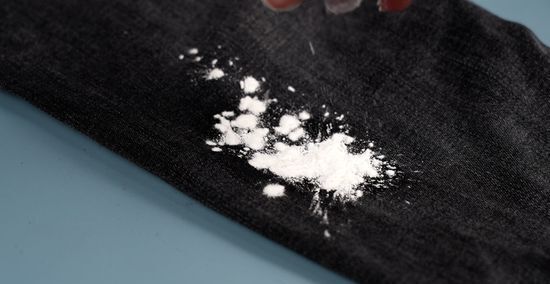
Sprinkle dried stains with cornstarch and let it sit for 15 minutes. Cornstarch is great at absorbing oils in products like Aquaphor. Just dust cornstarch over the stain and leave it be for about 15 minutes to penetrate and soak up the stain. Then, gently scrape off the cornstarch and Aquaphor with a soft-bristled brush, like a toothbrush. Shake out your garment and inspect the stain to ensure it’s completely gone. If it’s not, reapply more cornstarch. As an alternative, use talcum powder or baby powder, which also absorb oil. Using cornstarch to remove Aquaphor is especially great on delicate fabrics like silk that have dried on stains.
Apply a commercial stain remover onto the fabric.

Let the stain remover soak into the stain for 15 minutes. Spray or gel stain removers contain gentle acids and enzymes that lift off fresh and dried-on Aquaphor stains from your clothes. Just add a dollop of your stain remover onto the stain and work it into the Aquaphor with your fingers or a laundry brush. Then, let it soak for 15 minutes, or according to the remover’s instructions. If you don’t have stain remover on hand, pour a drop of laundry detergent onto the stain. Then, work it into the fabric with your hands or soft brush.
Rub mechanic’s soap into the Aquaphor stain.

Let mechanic’s soap soak into the stain for 30 minutes. While mechanic’s soap is made to get out motor oil stains, it can also remove greasy Aquaphor residue. Simply apply a dollop of the soap onto the stain. Then, gently rub the soap into the Aquaphor and let it sit for about 30 minutes.
Massage shampoo into the stain.
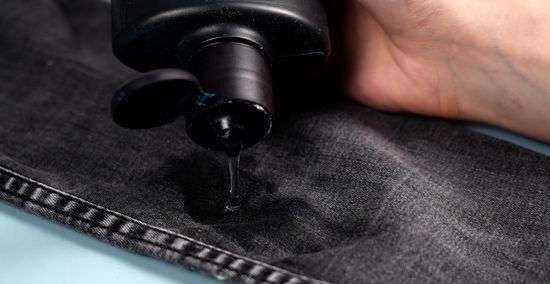
Rub shampoo formulated for oily hair onto the stain with your fingers. Shampoos made for oily hair strip your hair of grease, so it’s no surprise they can break up waxy Aquaphor stains on your clothes. Simply apply several drops of shampoo onto the stain and massage it into the fabric with your fingers. Then, rinse the shampoo out with cool water.
Spray dried-on stains with WD-40.

Soak Aquaphor stains with WD-40 for 15 minutes. WD-40 is a multi-purpose degreaser that can even remove stubborn, oily Aquaphor stains on your garment. Just spray the stain with WD-40 and let the lubricant soak into the stain for about 15 minutes.
Soak stained white clothes in bleach.
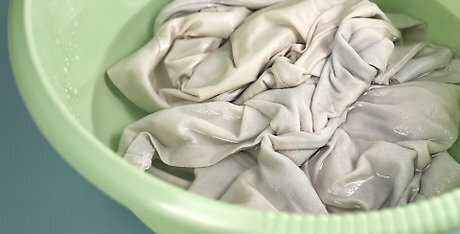
Get your whites white again with equal parts bleach and water. Bleach brightens your white clothes and removes stubborn, dried-on Aquaphor stains. Just mix together equal parts bleach and cool water in a bucket or your sink. Then, soak your clothes in the bleach for 5 to 15 minutes. Check your garment’s care instructions to make sure it’s safe to use bleach. When using bleach, wear gloves and work in a well-ventilated area. Do not combine bleach with any other cleaning agents. Mixing bleach can produce harmful, toxic gasses. If you have bright-colored or patterned clothes with Aquaphor stains, wash your clothes with color-safe, oxygen bleach. Simply follow your laundry machine’s instructions for where to pour the bleach and how much to use.
Launder your garment and let it air dry.
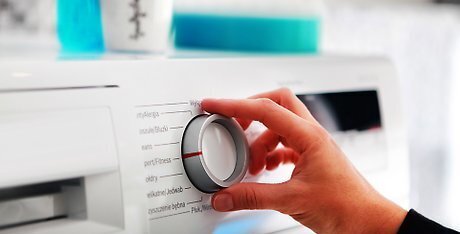
Wash your clothes in lukewarm water and leave them to air dry. Check your garment’s care instructions and select the appropriate temperature and washing cycle on your washing machine. Then, take out your clothes when they’re done and examine the stain. If the Aquaphor is gone, air dry your clothes by placing them on a drying rack or laundry line outside. Avoid using hot water and instead use the coolest water possible for your garment. Hot water can cause the Aquaphor stain to set into your clothes. Skip the dryer for the same reasons. The hot air can set the stains on your clothes. If you see Aquaphor stains on your clothes after washing them, repeat the steps for the cleaning method you chose. Or, try a different stain removal method. For a stain-fighting boost, add a scoop of OxiClean to your machine when you wash your clothes.











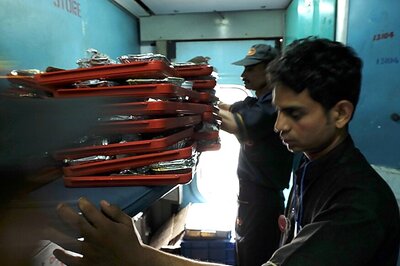








Comments
0 comment